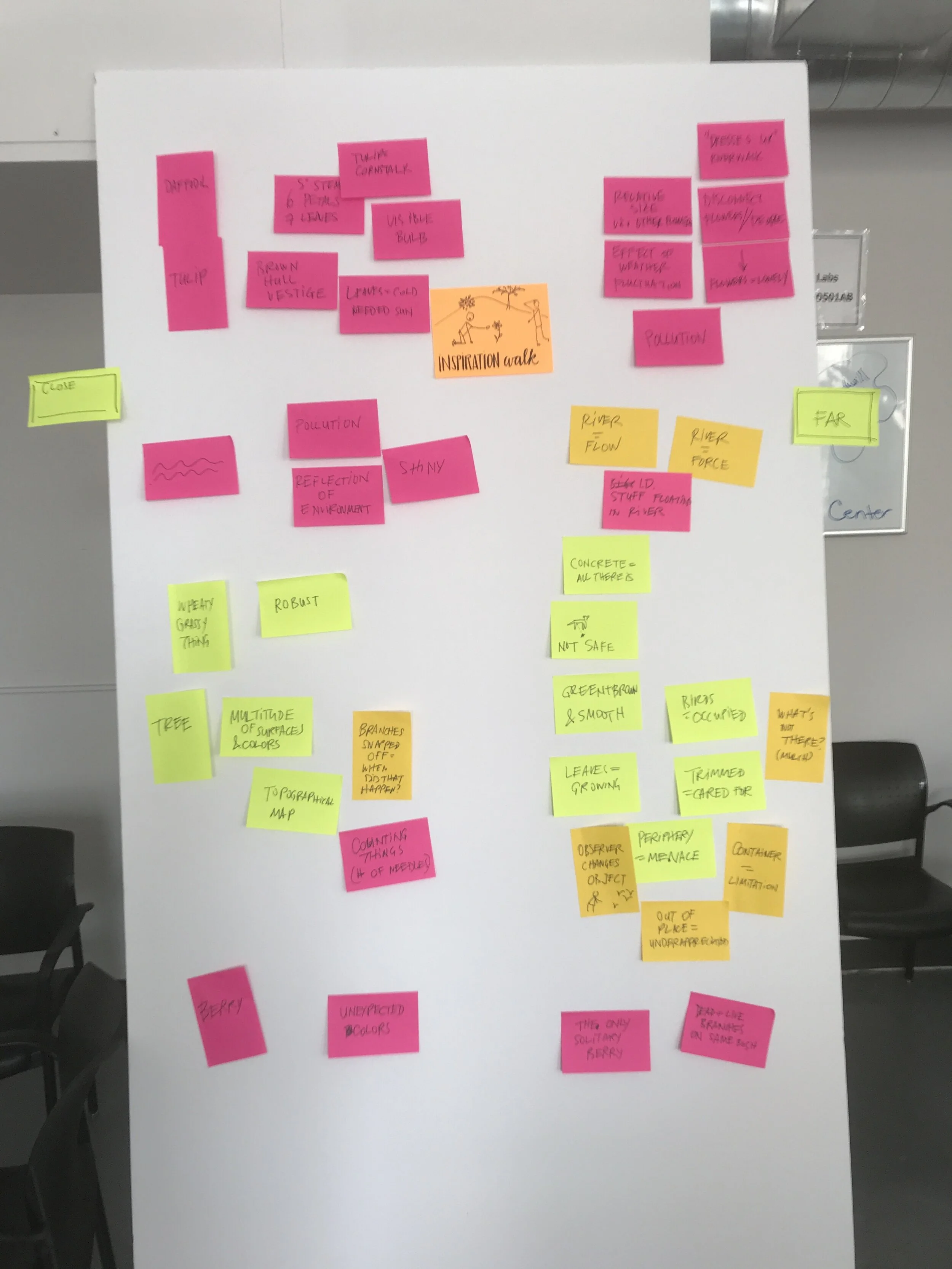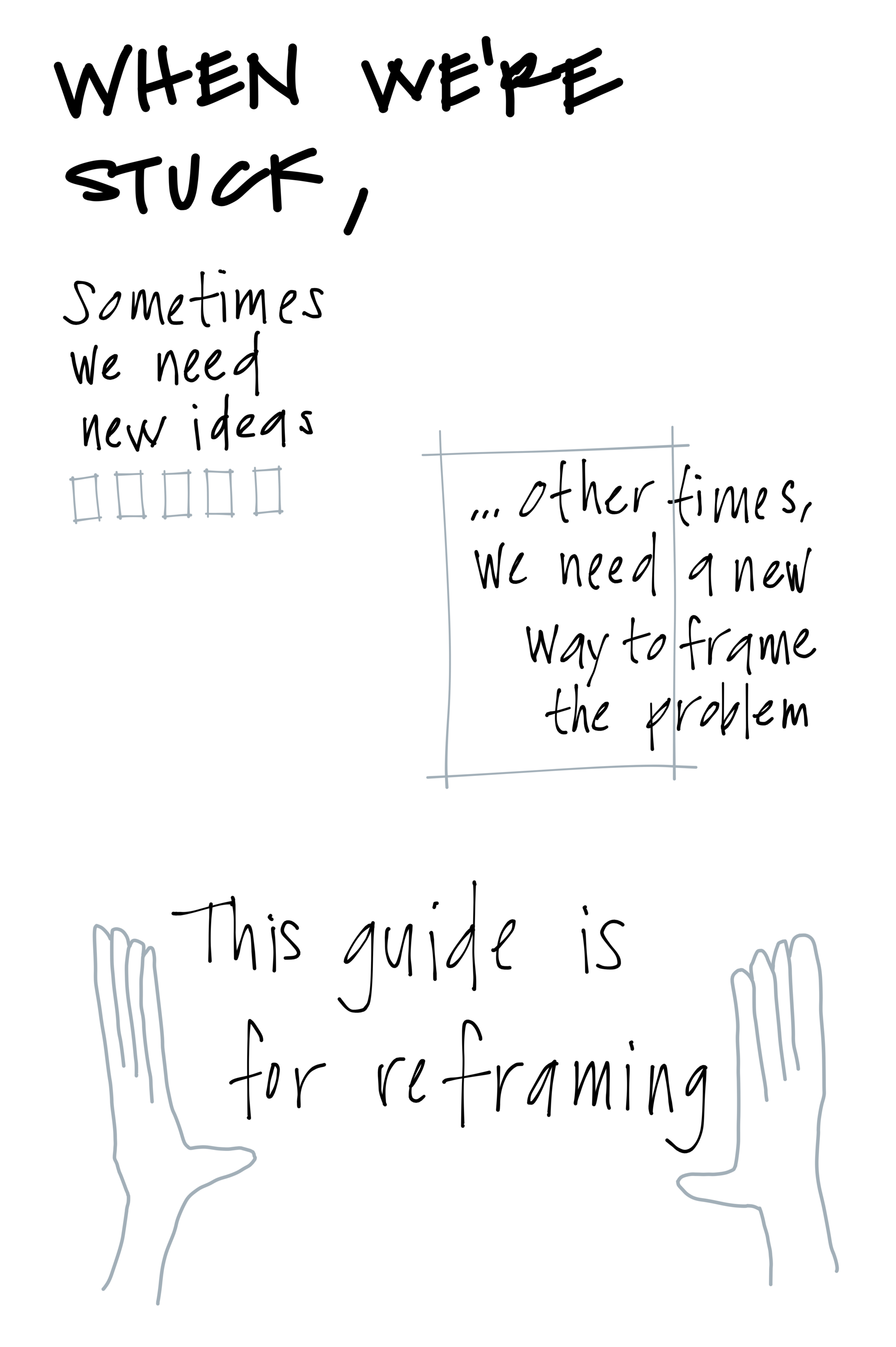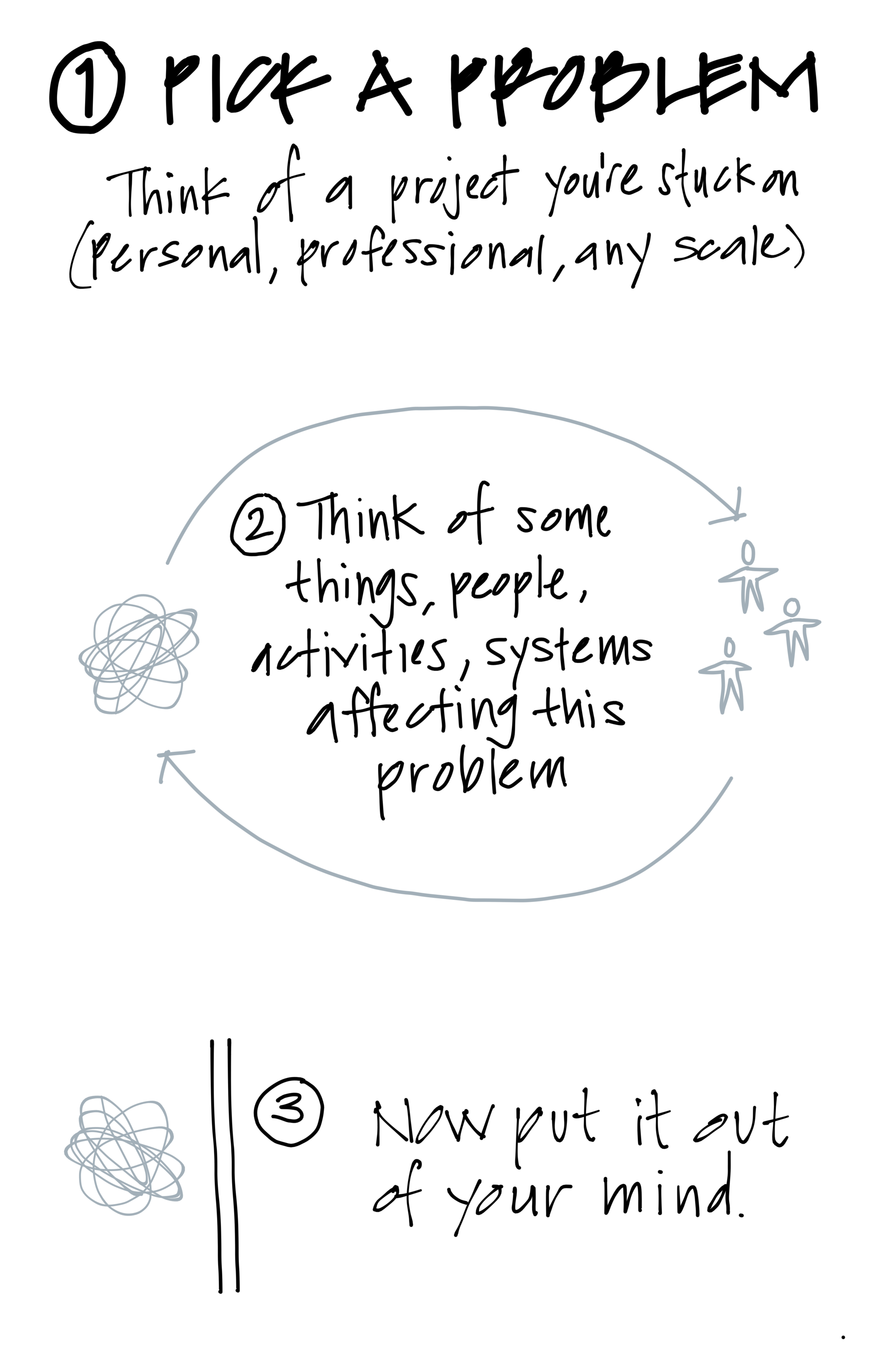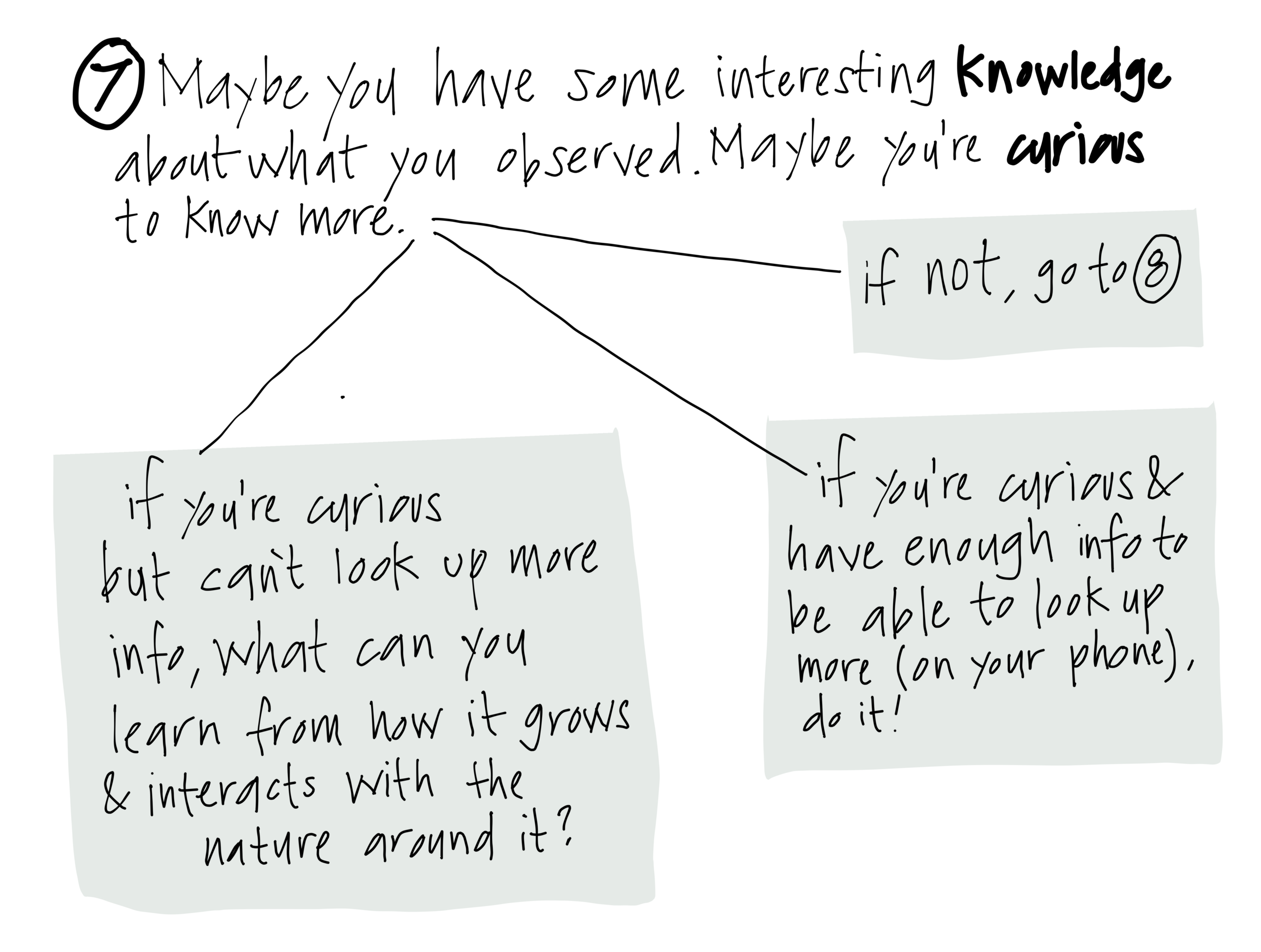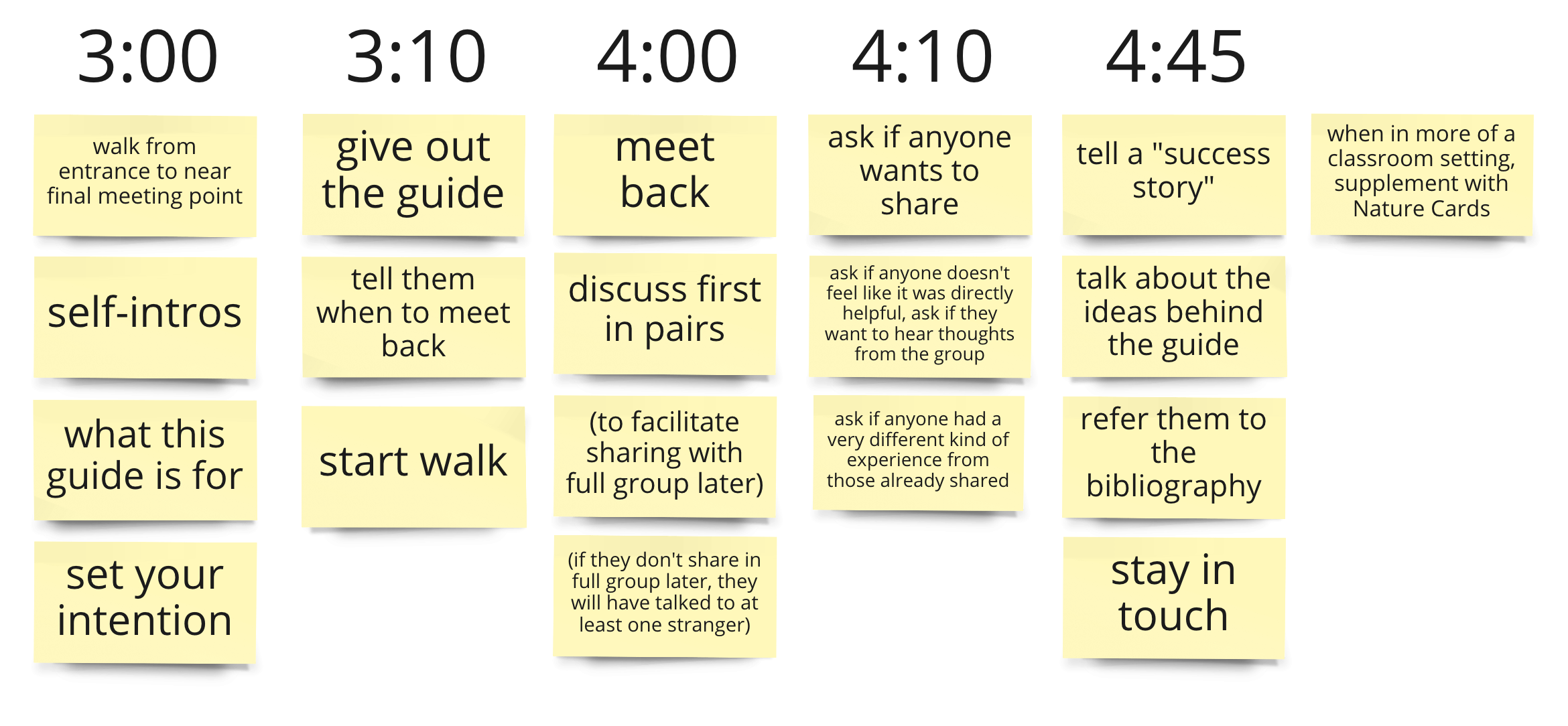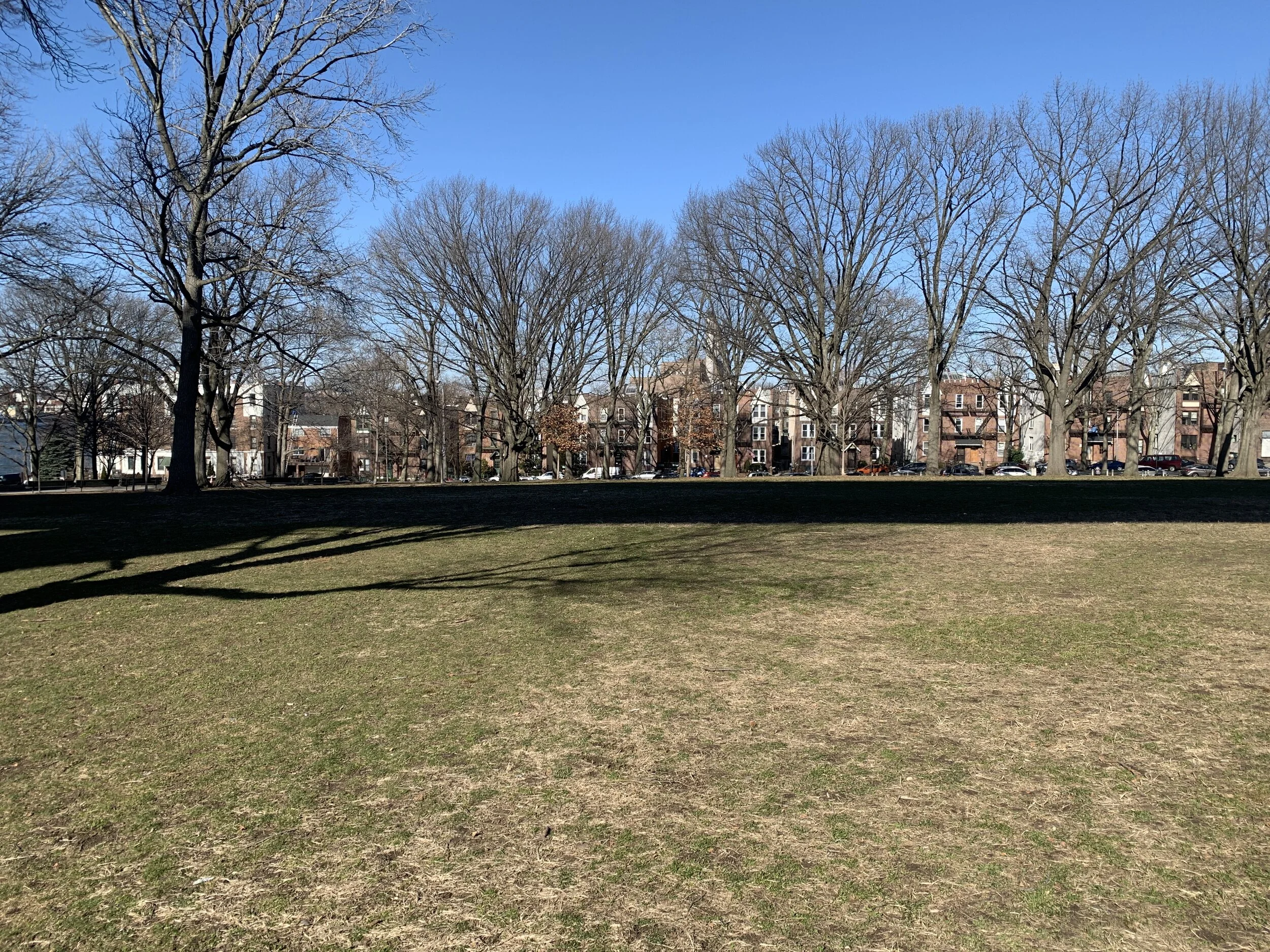
I tested the Inspiration Walk through Nature with three different groups of users.
With each group, I gained new insights into how to facilitate the event for those users’ needs. I also found new ways to make the guide better for all users.
Iteration 1
Context
financial services executives
work inside all day
followed the guide individually and then met to discuss in person
Questions to answer through testing
Is this too weird or open-ended for executives to do with colleagues?
Is it structured enough for them to complete it?
Will it make a difference?
What I learned
They set out tentatively, but many came back with deep reflections
The group conversation after the walk transformed their reflections into energizing and pertinent insights for the project at hand.
Some of them didn't accept the relevance of the activity until I told a story about biomimicry used successfully in service design.
Iteration 2
Context
undergraduate anthropology students
followed the guide individually and met to discuss over Zoom
Questions to answer through testing
if I make the guide engaging enough, will they devote time to each step without rushing through?
Will they find meaning in the parts of nature they encounter in their walk?
Will they share their problems and insights with classmates?
What I learned
Many students were ready to talk to the group about their problems, which were very personal.
However, the range of reframes for personal problems was limited by not seeing them as part of a larger social system
these students were quick to elaborate metaphors, but they didn't take the time to seek out scientific information for inspiration
Iteration 3
Context
public MeetUp group in NYC public parks
during easing of pandemic lockdown restrictions
Questions to answer through testing
If I include a new step to set expectations for reframing problems rather than solving them, will this help participants use the guide?
If I include a new step to recast their initial problems in systemic terms, will it help them reconfigure the problem in response to the inspiration they derive from nature?
If I include a new step to recast their initial problems in systemic terms, will it help them reconfigure the problem in response to the inspiration they derive from nature?
If I include a new step to prompt online research, will it enrich the reframe or distract from it?
Does the MeetUp group description resonate with people to the point that they show up for the event?
What I Learned
People showed up, and shared very personal stories with a group of strangers.
The most magical moments of the Meet-Ups came from participants sharing personal reframes with other participants, so careful planning is needed to facilitate this sharing in ways that feel respectful and safe.
